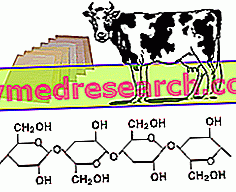CELLULOSE is a homogeneous polysaccharide, which differs from starch in that it is formed by b-glucose, where the single molecules, with a B-1, 4 bond, are rotated with respect to each other by 180 °; the fact that each molecule is rotated 180 ° with respect to the one with which it is bound, causes the cellulose molecule to assume a linear structure; this rotation does not occur in the case of the a-1.4
Category pharmacognosy
The artificial technical processes that determine the removal of water, hence the slowing down or blocking of hydrolysis reactions, are LILOPHILIZATION and ESSICATION. Drying is the most used method because it is simpler and handed down from the phytotherapeutic tradition, and from its history, as the only means to avoid drug alteration processes
Selection is the genetic factor that significantly conditions the primary sources of active principles, in particular cultivated plants and biotechnologies. In the biotechnological field, the selection is applied to isolate those cells which then, transferred to an in vivo culture, serve to improve biotechnological productivity in terms of the production of active but also bio-transformative principles
The Gentian, perennial herbaceous plant (family Genzianacee) of which rhizome and root are used, has both herbal and liqueur use. The gentian root is a drug with eupeptic properties, febrifuge and, associated with china, it is also antimalarial. After the harvest, if the drug has to have a herbal projection, it is immediately treated with technical factors, which block or enormously delay the hydrolysis and oxidation processes; if instead it must have a liqueur profile, it is left to ferment in particular structures, where enzymes and degradation processes begin to work; this activity leads to
How long does it take to dry a drug? When is a drug actually dry? How much moisture can be present inside the drug? The higher the temperature, the greater the evaporation speed of the water; therefore, the drying time can be reduced. A drug is properly dried if the amount of water inside is less than 5%
MICROCLIMATE FACTORS AND VARIABILITY OF ACTIVE PRINCIPLES INSIDE A SAME FITOCOMPLETE. An aspect to underline of pharmacognostic and phytochemical type - which relates to environmental factors, genetic and otherwise, which influence drugs - is the variability of the phytocomplex within the same species, cultivated or spontaneous, which grows in places with a different microenvironment
LIOFILIZATION: consists in the removal of water from the drug by sublimation; the drug is frozen in lyophilisers which, in particular conditions of pressure and temperature (taking into account the water state diagram), cause it to go away by sublimation (direct passage from the solid state to the gaseous state, without passing through the state liquid)
Another type of preparation obtained from plants, or parts thereof, not dried and untreated, is the MOTHER TINTING; dyeing is nothing but a preparation of herbal, phytotherapic, homeopathic or cosmetic use, to obtain healthy formulations. The dye, therefore, can itself be a preparation, or a starting point for obtaining different healthy formulations
When we talk about conservation properly we refer to a drug, or a preparation, treated with preservatives. These preservatives are mainly synthetic, such as BUTYLIDROSSIANISOL (BHA) or BUTYL DROSSITOLUENE (BHT), which are often found in the list of ingredients of different products. They are synthetic antioxidants and prevent processes that must be avoided or prevented, because they could alter the quality of the drug
EVOLUTION OF THE ODIERNO CONCEPT OF "MEDICATION" The Greeks were the first scholars of the natural sciences, along with the contemporary Arab civilization. The first pharmacognostes and scholars of natural medicaments were the "rhizotomes" or root collectors; they were great Greek scholars who joined great figures like Homer, Hippocrates and Galen
In the official pharmacopoeia there are general methods of evaluation, both chemical and biological. However, pharmacognosy also uses much more sophisticated methods, such as spectroscopic and chromatographic methods. The evaluation of the quality of the drugs from the chemical point of view provides a marked in-depth analysis, peculiar to the analytical capacity of the instruments used; in other words, a drug is evaluated on the basis of the quantity and quality of the active principles contained in it, which are determinant in an analytically precise way thanks to extremely precise chromatogr



